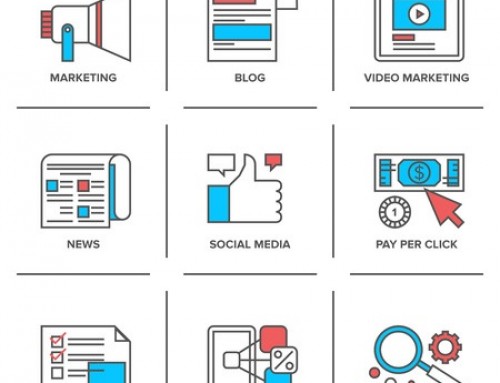If you run a real business, here’s how things used to pan out, back in 1999 – when Google was still in nappies:
A basic website cost £6,000 because it was built by a graphic designer who could translate his nice looking design from Photoshop (or whatever was used back then) into a website. Maybe using Frontpage or maybe coding the lot by hand. So you stumped up the 6k to get the website up.
Then you hired extra staff to deal with all the new enquiries and phone calls and extra work, because you were the only flower shop or plumber or dog grooming salon with a website online in your county, or possibly the world.
So you (and the other 4,000 businesses who owned a website) didn’t need to think about search engine optimisation or Google Analytics, or split testing, or calls to action or Adwords (it didn’t exist) or anything else apart from where to get a big enough wheelbarrow to take all your money to the bank.
Then after you’d chewed your fingernails down to your elbows worrying about the Millenum Bug and finally sobered up from the best New Year Party you’ll ever have, things pretty much carried on in the same vein, for maybe half a decade.
And then things changed …
Not all at once of course, like most “innovations” – growth is logarithmic rather than linear, and then it plateau’s.
By 2004 the cost of a website had halved but more and more businesses were buying them because the early adopters had proven that it worked for business. Only now it didn’t work quite as well as it used to because there was more competition. And savvy webmasters or webmistresses found out that Google’s algorithm that they use to determine whether your site ranks at number 1 for the search term “bikini waxing in Nottingham” – or number 41; was mainly based on how many LINKS you could get pointing back to your sites from other websites.
So people began to exchange links (you link to me, and I’ll link to you) and called it reciprocal linking – and it worked because everyone’s ranking rose above the non reciprocal linkers, and out came the wheelbarrows again, for a couple of years.
So by about 2006, you couldn’t find the email from your Auntie in your inbox because it was clogged up with messages asking for a link exchange. Happily though, the cost of a website had fallen to about £2,500 so more businesses bought one and more link requests were sent …
And then Google got rather good at displaying relevant search engine results so when you searched for “how do I teach my dog not to drag it’s arse across the carpet” you didn’t have to spend 4 hours of your life trawling through 100 pages to find your local vet. Instead there she was on page 1 along with numerous books and articles on dog training.
So now, to get any traffic from Google, you HAD TO be on page 1, or maybe page 2 of the search results.
Sidenote for clarification because I talk to competent business owners every day who still don’t get this:
Getting traffic (and enquiries) for being number 1 on Google, doesn’t mean being number 1 for your business name. People who type your business name into Google (other search engines are available but currently that’s where the traffic is) already know you exist, are probably an existing customer, and are looking for your phone number, or opening hours.
It means being number 1 for “garage doors Twickenham” assuming that you operate in the Ham area of London and do indeed sell and possibly fit garage doors.
If you still haven’t got it – someone who types “garage doors Twickenham” into Google isn’t doing so (with a few exceptions) because they get off on looking at pictures of garage doors. They’re doing it because they want a new garage door and don’t know where to get one. So if you are the first search result they see, they might just buy one from you and help you fill up your wheelbarrow.
So, because you had to be on page 1, search engine rankings became very important, even for wheelbarrow manufacturers.
And of course people tried to get as many reciprocal links as they possibly could from anywhere that would oblige.
So Google changed things …
And tweaked their algorithm so that if I link to you and you link to me, neither link carries any value for ranking purposes (traffic’s a different story)
By 2009, even the bloke who made the odd wheelbarrow in his garden shed out of bits he’d nicked from work had a website, because the cost had reduced to about £1,500, or a bag of Werther’s Originals if his wife’s cousin’s 13 year old whizz kid nephew could build it. And you could buy 300,000 links for about the price of a bag of crisps.
So the wheelbarrow manufacturers, who were so busy making wheelbarrows (and buying even bigger ones) that they’d never got a link back to their website, ever, started to get fewer and fewer enquiries from the internet as their site dropped down the rankings, usurped by sites that had lots of backlinks. And they couldn’t understand it, because they made the best wheelbarrows in the world.
All of which is a lengthy preamble for telling you that yes, you can get a decent website for £1,500 these days (if you haven’t got one and you want one, click here) but the budget, assuming that you actually want it to generate enquiries and sales, remains at £6,000.
What’s the other £4,500 for?
Marketing the website. Driving traffic to it, that you can convert into customers.
How do you effectively market the website in a post Panda and Penguin world ?
Send me £4,500 and I’ll tell you and do it for you.

